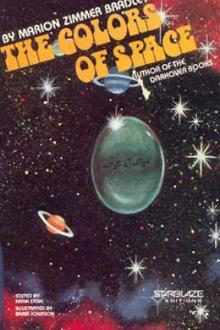Wing Commander #07 False Color by William Forstchen (best books to read in life .txt) 📕

Read free book «Wing Commander #07 False Color by William Forstchen (best books to read in life .txt) 📕» - read online or download for free at americanlibrarybooks.com
- Author: William Forstchen
Read book online «Wing Commander #07 False Color by William Forstchen (best books to read in life .txt) 📕». Author - William Forstchen
In fact, the computers came on-line before the sensors were fully working, and that was accounted a minor miracle by anyone with more than a smattering of computer knowledge. Given the vast differences in design philosophy between human and Kilrathi technicians, it had been touch and go for a time. In fact, it wouldn't have been possible to get the computer systems up and running at all without the active assistance of Hrothark, the Kilrathi Cadre Computer Officer who worked with Diaz's experts to modify their code to something the Kilrathi computers would recognize as usable. Fortunately the computer network was designed not only for redundancy and flexibility, but for a high degree of self-programming. Once Diaz and Hrothark introduced the basic directives into the system the computer net itself did most of the work of developing operating systems. Still, the sheer number of different jobs the computer had to oversee in order for the ship to work required a great deal of programming time, and even after the computer system was on-line and functioning programmers were continuing to introduce new routines as they became necessary. Computer control for environmental systems was introduced first, followed by sensors, communications, and the ship's power grid. But minor errors continued to be almost constant reminders of how much they had to do, from the periodic shutdown of gravity and light in the crew quarters on Deck Six to the fault that caused the entire computer system to crash every time someone tried to send a passenger lift to the ship's recreation section.
When at length the CSTCC came on-line, Bondarevsky was ready to turn control of the section over to Commander Juliette Marchand, who had been designated as the carrier's Space Officer, more often referred to as "the Boss." Marchand, like Bondarevsky, came from the Confederation Navy. She had previously served aboard the TCS Ticonderoga, but had drawn a court-martial and dismissal from the service for willfully assaulting a superior—the Confederation Secretary of Defense, no less—after the man had interfered with her disciplinary decision with regard to a subordinate during an inspection of her carrier soon after the Battle of Earth. A small, dark-haired woman who tended to wear coveralls emblazoned with the motto "Boss," Marchand was nothing short of brilliant when it came to handling CSTCC operations, but she had a short fuse and a habit of regarding "her" bailiwick as a private fiefdom, not to be interfered with by anyone, even the Wing Commander who rated as her nominal superior.
Under Marchand's iron hand, the starboard flight deck entered normal operation three weeks after the repair job began. But Bondarevsky's job had only just begun. Traffic Control could control the launch and recovery of small craft from the flight deck, but there was still plenty of work to be done. The three massive elevators that raised and lowered planes from the cavernous hangar deck beneath the starboard flight deck had to be overhauled before the carrier could pretend to be more than a platform for outside craft to land on. Unfortunately two of them had been seriously damaged, one by the hit that had crippled the approach deck, the other by Graham's scavenging missions, who had adapted some of the equipment that operated the aft elevator for use in repairing their planetside shuttles. By ruthlessly scrounging for parts from Graham's gear and the remains of the aft elevator they were able to make a start at fixing the forward one, but it was slow going at best and would leave them with just two working elevators on the starboard side. Bondarevsky knew from long experience that this would severely handicap flight operations in a combat situation, when a fast turn-around of planes was essential to maintaining the carrier's battle capabilities. He tried not to think too much about what they had deduced about Karga's last battle, since confirmed by Murragh. Limited flight operations had left the supercarrier unable to stand against a pair of cruisers which otherwise would never have been able to approach close enough to be so much as a nuisance.
There was one bit of good news, though. In the process of getting the elevators and the hangar deck back into operation Sparks was able to pass on the report that many of the Kilrathi planes in the starboard side hangar deck were useable. Each flight deck had its own hangar area, so the starboard side represented roughly half of the complement of aerospace craft on board. Out of sixty-four fighters, bombers, and support craft allocated to the starboard side, thirty-seven were arrayed in their storage bays and appeared undamaged. There were also





Comments (0)